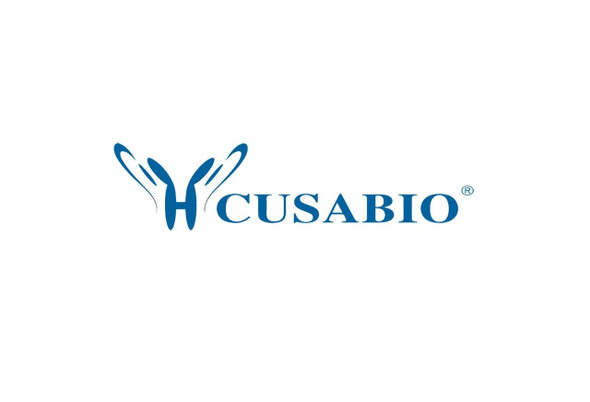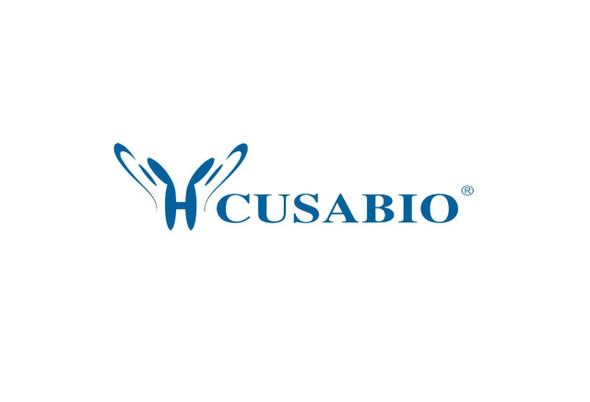Cusabio Human Recombinants
Recombinant Human B-cell receptor-associated protein 31 (BCAP31), partial | CSB-RP034254h
- SKU:
- CSB-RP034254h
- Availability:
- 3 - 7 Working Days
Description
Recombinant Human B-cell receptor-associated protein 31 (BCAP31), partial | CSB-RP034254h | Cusabio
Alternative Name(s): 6C6-AG tumor-associated antigen;Protein CDMp28
Gene Names: BCAP31
Research Areas: Apoptosis
Organism: Homo sapiens (Human)
AA Sequence: SLQWTAVATFLYAEVFVVLLLCIPFISPKRWQKIFKSRLVELLVSYGNTFFVVLIVILVLLVIDAVREIRKYDDVTEKVNLQNNPGAMEHFHMKLFRAQRNLYIAGFSLLLSFLLRRLVTLISQQATLLASNEAFKKQAESASEAAKKYMEENDQLKKGAAVDGGKLDVGNAEVKLEEENRSLKADLQKLKDELASTKQKLEKAENQVLAMRKQSEGLTKEYDRLLEEHAKLQAAVDGPMDK
Source: E.coli
Tag Info: N-terminal GST-tagged
Expression Region: 2-243aa
Sequence Info: Partial
MW: 54.5 kDa
Purity: Greater than 90% as determined by SDS-PAGE.
Relevance: Functions as a chaperone protein. Is one of the most abundant endoplasmic reticulum (ER) proteins. Plays a role in the export of secreted proteins in the ER, the recognition of abnormally folded protein and their targeting to the ER associated-degradation (ERAD). Also serves as a cargo receptor for the export of transmbrane proteins. May be involved in CASP8-mediated apoptosis.
Reference: Molecular cloning and characterization of a transmembrane surface antigen in human cells.Li E., Bestagno M., Burrone O.Eur. J. Biochem. 238:631-638(1996)
Storage: The shelf life is related to many factors, storage state, buffer ingredients, storage temperature and the stability of the protein itself. Generally, the shelf life of liquid form is 6 months at -20?/-80?. The shelf life of lyophilized form is 12 months at -20?/-80?.
Notes: Repeated freezing and thawing is not recommended. Store working aliquots at 4? for up to one week.
Function: Functions as a chaperone protein. Is one of the most abundant endoplasmic reticulum (ER) proteins. Plays a role in the export of secreted proteins in the ER, the recognition of abnormally folded protein and their targeting to the ER associated-degradation (ERAD). Also serves as a cargo receptor for the export of transmembrane proteins. May be involved in CASP8-mediated apoptosis.
Involvement in disease: Deafness, dystonia, and cerebral hypomyelination (DDCH)
Subcellular Location: Endoplasmic reticulum membrane, Multi-pass membrane protein, Endoplasmic reticulum-Golgi intermediate compartment membrane, Multi-pass membrane protein
Protein Families: BCAP29/BCAP31 family
Tissue Specificity: Ubiquitous. Highly expressed in neurons and discrete endocrine cells.
Paythway: Proteinprocessinginendoplasmicreticulum
Form: Liquid or Lyophilized powder
Buffer: If the delivery form is liquid, the default storage buffer is Tris/PBS-based buffer, 5%-50% glycerol. If the delivery form is lyophilized powder, the buffer before lyophilization is Tris/PBS-based buffer, 6% Trehalose, pH 8.0.
Reconstitution: We recommend that this vial be briefly centrifuged prior to opening to bring the contents to the bottom. Please reconstitute protein in deionized sterile water to a concentration of 0.1-1.0 mg/mL.We recommend to add 5-50% of glycerol (final concentration) and aliquot for long-term storage at -20?/-80?. Our default final concentration of glycerol is 50%. Customers could use it as reference.
Uniprot ID: P51572
HGNC Database Link: HGNC
UniGene Database Link: UniGene
KEGG Database Link: KEGG
STRING Database Link: STRING
OMIM Database Link: OMIM









